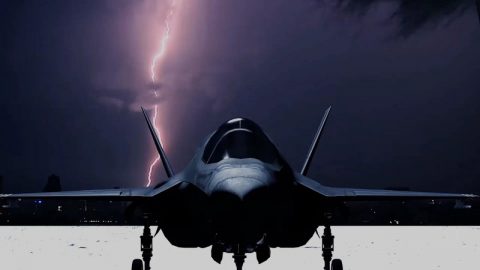
YouTube / Not What You Think
Lockheed Martin’s F-35 Lightning II might just be the most technologically advanced multirole fighter in the US arsenal, but it’s been dealing with a problem since its introduction to service.
Operators of this fighter are ordered not to fly within 25 miles of a thunderstorm or other atmospheric electrical activity starting from 2020.
The issue points to the F-35A’s OnBoard Inert Gas Generation system. This system pumps nitrogen-enriched air into its fuel tanks to inert them and prevents the aircraft from exploding if struck by lightning.
Well, the tubings and fittings inside the Lightning’s fuel tank have been found to fail over time due to vibrations and swings in temperature and pressure during flight.
Interestingly, F-35s were also prohibited from flying within miles of lightning in the early 2010s because of the same problem. It was rescinded in 2014 after the OBIGGS was redesigned.
Apparently, the issue only affects the F-35A variant of the US Air Force as the other variants have a slightly different OBIGGS design.